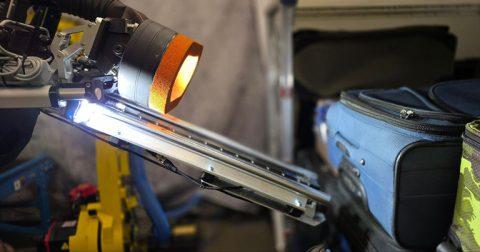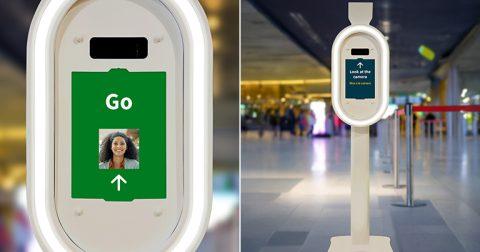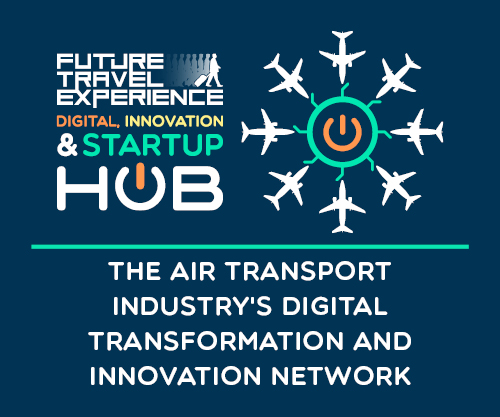Innovation success isn’t just about having great ideas, it’s about having a clear, structured, and executable strategy. Ahead of their participation at FTE Global – the “CES of Aviation” taking place in Long Beach, California, on 9 to 11 September 2025 – Pablo Lopez Loeches, Head of Ideation & Entrepreneurship, Aena; Nicole Hodges-Austin, Innovation Program Manager, Alaska Airlines; Thomas Dworschak, Head of IT Digitalization & Innovation, Vienna Airport; Tom Cizauskas, Business Administration Manager, Gerald R. Ford International Airport Authority; and Justin Kester, VP Global Sales, Synaptic Aviation, share their ‘Pilot Stories’. In this article, they provide compelling insights into the lessons learned and secrets to a successful innovation strategy.
View the full FTE Global 2025 schedule at a glance >> Register for FTE Global 2025 >>Aena’s focus on pilot testing to enable faster strategic decision-making, foster a culture of co-creation, and accelerate innovation
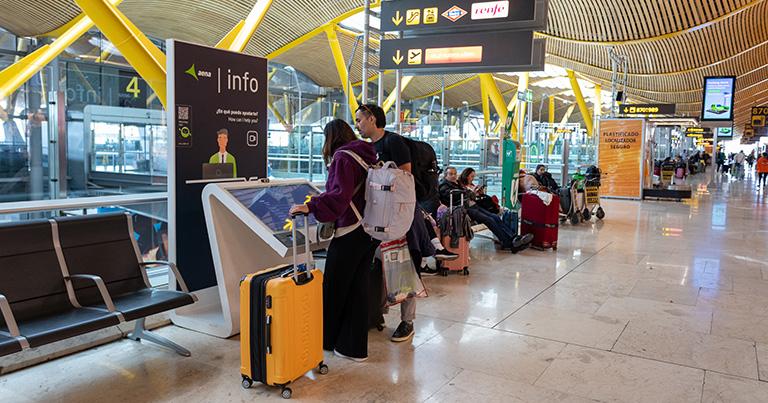
Aena has designed an innovation funnel that channels proposals from multiple entry points – internal teams, external partners, startups, business unit needs, etc – filters them based on strategic criteria, and carries them through a Proof of Concept phase that requires minimal resources but allows the airport operator to assess technical and economic viability. “If results are promising, we scale the solution across our airport network,” explains Pablo Lopez Loeches, Head of Ideation & Entrepreneurship, Aena. “This approach helps us prioritise high-value initiatives and deploy impactful solutions quickly.”
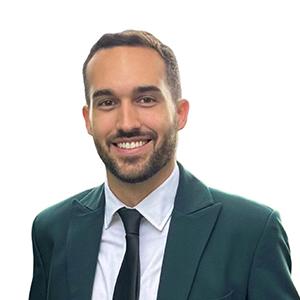
Pilot testing is an important element in Aena’s innovation strategy, as Loeches will discuss in a session titled ‘Pilot stories: What are hard lessons learned, and secrets, to a successful innovation journey?’ at FTE Global (Long Beach, California, 9 to 11 September 2025). “It allows us to validate technological solutions in real but controlled environments, delivering strategic, operational, and financial benefits,” says Loeches. “These include confirming technical and operational feasibility under real conditions, reducing risks and costs, collecting data and feedback for continuous improvement, enabling faster strategic decision-making, fostering a culture of innovation and co-creation, and accelerating the overall innovation process.”
One key lesson Aena has identified is the importance of early involvement from business units throughout the innovation journey. “When operational teams participate from the beginning, not only does the design and adoption of solutions improve, but the innovation culture across the organisation is strengthened,” Loeches shares. “This transforms innovation into a shared, useful, and sustainable effort.”
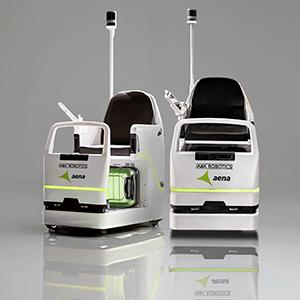
In 2020, Aena took a decisive step by creating a cross-functional Directorate of Innovation, Sustainability, and Customer Experience. This structure has allowed it to position these three pillars at the strategic core of the organisation, aligning innovation with the global challenges of the airport sector. “We then developed a Strategic Innovation and Digital Transformation Plan for the entire company, outlining key initiatives, technologies to explore, and a medium-term investment commitment,” Loeches explains. “The plan is structured into three main programs: ‘Passenger to Customer’, ‘Efficient Resource Use’, and ‘Beyond the Airport’. It’s supported by a catalogue of enabling technologies such as artificial intelligence (AI), Internet of Things (IoT), biometrics, automation, and clean energy. Importantly, the plan was co-created with all business units, ensuring both operational and strategic alignment.”
To execute this strategy, Aena has also developed specific tools and mechanisms, including:
- Innova – an intrapreneurship program for Aena employees
- Aena Ventures – an open innovation program for collaboration with startups
- Strategic partnerships with third parties (suppliers, airlines, airports, universities, etc)
- A dedicated Technology Surveillance team
- Participation in international working groups
“These instruments help us accelerate the testing of emerging technologies, deploy solutions with agility, and foster co-creation with the broader innovation ecosystem,” says Loeches. “In terms of technologies, we’re currently working on projects involving process automation, AI, customer experience enhancement, smart energy management, and predictive models for airport operations.”
Some concrete examples include:
- Artificial Intelligence (AI): used for internal applications like analytics or automated boarding bridges, and externally through Aena’s LLM-based virtual assistant for passenger communication.
- LiDAR, video analytics, and sensors: for monitoring processes in terminals and on the apron.
- Autonomous mobility: smart pods that allow passengers to navigate the terminal independently via interactive tablets.
- Drones and AI-equipped vehicles: for inspection and maintenance tasks both airside and inside terminals.
- Collaborative data-sharing platforms: for real-time baggage tracking and operational coordination.
- Sustainability technologies: including photovoltaic plants, geothermal climate control, vertical gardens with NOx-absorbing paint, and smart waste bins with IoT.
- Virtual reality training: for airport personnel such as firefighters and maintenance teams.
Looking ahead, Loeches is eager to participate at FTE Global – the “CES of Aviation” taking place in Long Beach, California, on 9 to 11 September 2025. “We’re truly excited about our first participation in FTE Global, as we’ve previously only attended the EMEA edition. Given our international presence and significant operations in the Americas (Brazil, Mexico, Colombia, and Jamaica), it makes perfect sense to be part of this global forum. Events like FTE Global are essential for sharing real-world experiences, learning from other industry players, and generating synergies with airports, airlines, tech providers, and startups. The networking opportunities at FTE Global are a powerful source of inspiration and collaboration that drive innovation beyond borders. We especially value the connection with the entrepreneurial ecosystem, as it allows us to identify emerging solutions, explore new forms of collaboration, and accelerate the transformation of the airport sector.”
View the full FTE Global 2025 schedule at a glance >> Register for FTE Global 2025 >>Alaska Airlines on the importance of building a process, refining the process, and trusting the process
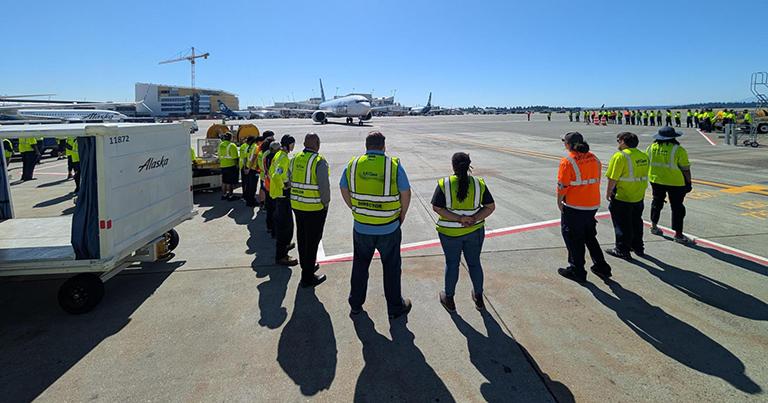
Alaska Airlines emphasises the importance of building a process, refining the process, and trusting the process. It is a key message that Nicole Hodges-Austin, Innovation Program Manager, Alaska Airlines, will share in a session titled ‘Pilot stories: What are hard lessons learned, and secrets, to a successful innovation journey?’ at FTE Global (Long Beach, California, 9 to 11 September 2025).
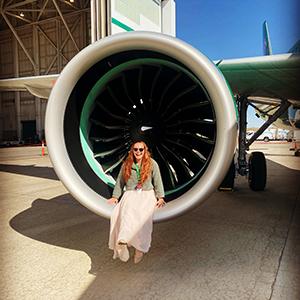
“Every airline is different and has different structures and stakeholders,” says Hodges-Austin. “Build a process where you can document when and how to bring them into a project, learn from failures or mistakes, and continue to iterate on that process after every project. Eventually, you should have something that can be repeatable, and stakeholders know what to expect. I find that it builds trust, streamlines projects and generally produces the most consistent results. It also allows for failures. We innovate and we fail. A lot. A good process can be made better with every failure we find and embrace.”
The Alaska Airlines innovation program has so far been very focused on a structured design process. “What is the problem we see? Is the problem solvable by technology? How does it align with the long-term vision for Alaska? These are just a handful on questions we ask ourselves before we start to really explore a product or new idea,” Hodges-Austin explains. “We are not exploring technology for technology’s sake; we are ensuring the work we do can/will have a meaningful impact on our operation or guest experience.”
Looking ahead, Hodges-Austin is eager to participate at FTE Global – the “CES of Aviation” taking place in Long Beach, California, on 9 to 11 September 2025. “I am very much looking forward to FTE Global! I think these types of events are a fantastic way to network and find new opportunities for collaboration, share what works and what doesn’t, and geek out about aviation will fellow airplane nerds. After all, I met the Alaska innovation team at an FTE event, and I now work with them. It feels dramatic but, in a very real way, FTE led me to my dream job.”
View the full FTE Global 2025 schedule at a glance >> Register for FTE Global 2025 >>Vienna Airport fostering a learning culture where teams with ideas trial new tech in safe Proof of Concepts
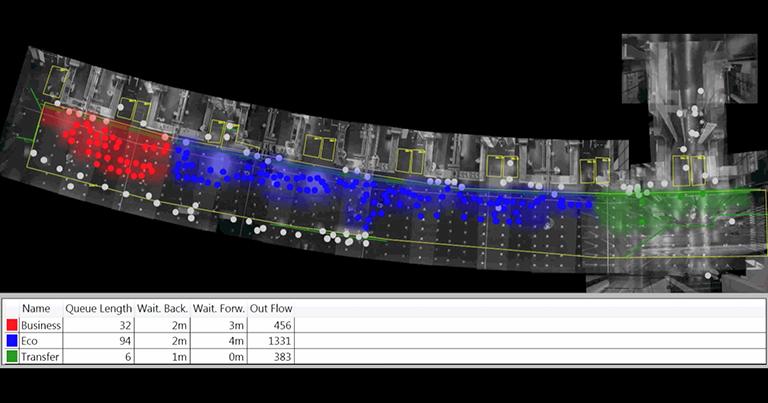
Digitalisation and innovation are strategic pillars for Vienna Airport – a Corporate Partner of the FTE Digital, Innovation & Startup Hub. Thomas Dworschak, Head of IT Digitalization & Innovation, will discuss Vienna Airport’s innovation journey in a session titled ‘Pilot stories: What are hard lessons learned, and secrets, to a successful innovation journey?’ at FTE Global (Long Beach, California, 9 to 11 September 2025).
Dworschak highlights some key messages he will share in the conference:
- There is no silver bullet approach: “Each organisation needs its very own innovation model. I will share ours with a virtual, centralised coordination and decentralised execution of innovation initiatives. Strong management buy-in is provided by a top-management board providing the resources.”
- Open innovation as a lever: “We lean on communities like the FTE Digital, Innovation & Startup Hub and the FTE Baggage Innovation Working Group, as well as other national, international and industry groups to share lessons, find partners and co‑run Proof of Concepts. Working with young companies like startups and scaleups can bring quick insights and solutions, but at the same time might be more intense concerning the amount of exchange necessary.”
- Value over hype: “Pilots are a means to an end. We prioritise use cases with business value/benefit, set test and exit criteria upfront, and treat stopping a pilot as focus, not failure. Appreciate the value of insights and experiences gained – especially when the initiative is stopped.”
- Governance & roadmap: “Mutually agreed ownership and measurable success criteria are non‑negotiable to turn pilots into solutions.”
- Technology focus with realism: “Artificial intelligence (AI)/GenAI, Internet of Things (IoT)/Digital Twins, robotics & autonomous operations, and biometrics propose big benefits – yet we are honest about maturity and only scale when value and readiness are proven.”
Dworschak emphasises that only real-world use-cases can prove benefit. “You need to have a full reality check from the very beginning. That is only possible if the people looking for improvement in their situation are involved in the initiative from the start. Their input and feedback make sure that the right success criteria are in place and can be properly evaluated.”
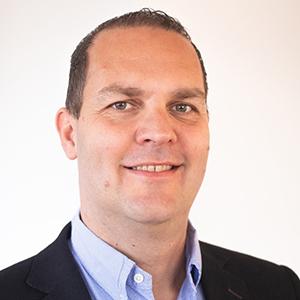
The Digital InnoVIEation Hub is Vienna Airport’s central, but virtual service point for all initiatives and coordinates knowledge sharing. The Digital Innovation Board (DIB) secures executive buy‑in and prioritises topics – such as autonomous driving and AI – and the work is decentralised by the subject matter experts in dedicated innovation projects. “We foster a learning culture where teams with ideas trial new tech in safe Proof of Concepts and can deliberately stop what doesn’t deliver value,” Dworschak explains.
Open innovation and partnerships are key. “One is seldom the first with a problem and different views and approaches sometimes inspire totally new ideas,” says Dworschak. “We believe in the power of knowledge sharing and joint forces. That’s why we are engaged in numerous communities on a national and international level, in our own industry as well as across industries.”
Vienna Airport has some key technology focus areas: IoT & Digital Twins for real‑time situational awareness and as the data foundation for AI; AI/GenAI for new ways of support for both customers as well as employees – scaled with compliance and change-management in mind; and autonomous vehicles and robotics to lift efficiency and overcome staff shortages due to demographics, with staged proof-then-scale.
Looking ahead, Dworschak is eager to participate at FTE Global – the “CES of Aviation” taking place in Long Beach, California, on 9 to 11 September 2025. “It is my first time at FTE Global and I am very much looking forward to it. In-person events do have an added value, I am curious how that works in such a massive setup. The agenda fits perfectly: leadership perspectives alongside practical experiences, plus an exhibition showing real-world solutions. I expect a lot of food for thought. I hope that networking with like-minded people, as well as talks with vendors and providers, will spark some inspiration for new, maybe even joint initiatives.”
View the full FTE Global 2025 schedule at a glance >> Register for FTE Global 2025 >>Gerald R. Ford International Airport driving innovation that is practical, collaborative, and people-focused
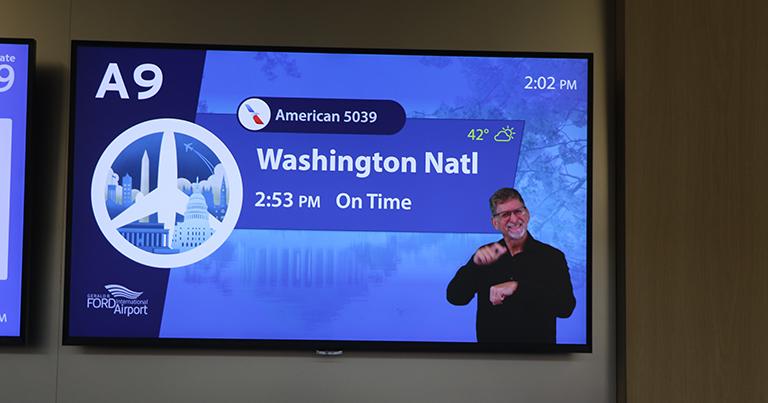
Gerald R. Ford International Airport (GRR) – a Corporate Partner of the FTE Digital, Innovation & Startup Hub – has learned that innovation succeeds when it is practical, collaborative, and people-focused. Through the ‘Ford Launchpad for Innovative Technologies and Entrepreneurship’, or FLITE, GRR has supported more than 30 companies with more than one million dollars in grant funding across seven rounds.
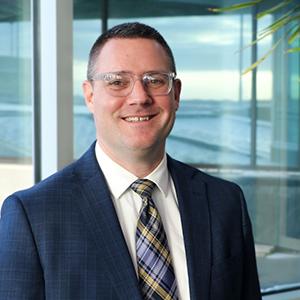
Airports are highly regulated and mission critical environments, so the ability to pilot emerging technologies in a live but controlled setting is essential, as Tom Cizauskas, Business Administration Manager, Gerald R. Ford International Airport Authority, will emphasise in a session titled ‘Pilot stories: What are hard lessons learned, and secrets, to a successful innovation journey?’ at FTE Global (Long Beach, California, 9 to 11 September 2025). “Innovation in aviation requires resilience and a willingness to learn from setbacks as much as from successes,” Cizauskas shares. “We have also seen the power of collaboration because no solution exists in isolation. Progress requires airlines, startups, service providers, and government partners working together. At the heart of our journey is the belief that technology should remove barriers and improve the travel experience. Pilots such as autonomous wheelchairs and artificial intelligence (AI)-driven sign language translation for deaf travellers are strong reminders that innovation can be both inclusive and operationally transformative.”
The GRR journey has shown that early-stage startups often face high barriers when entering the aviation industry and FLITE was created to bridge that gap. The combination of grant support and access to a live airport environment has proven to be a catalyst for real progress. “We have seen that starting small but testing in real-world conditions allows solutions to be refined quickly while minimising disruption,” Cizauskas explains. “Funding is important, but access to our staff, passengers, and facilities is often what makes the difference between a concept and a scalable product. Our experience with autonomous wheelchair pilots, for example, confirmed that the technology holds enormous promise, but also revealed the importance of integrating it within existing service models to preserve dignity and safety for passengers with reduced mobility. We have embraced a wide range of technologies from AI systems that improve baggage handling and apron operations to sustainable electric cargo movers and autonomous lawnmowers, because innovation in aviation cannot be one dimensional.”
Indeed, what has made FLITE successful is that it is not separate from GRR’s long-term vision. It is deeply connected to the airport’s $600 million capital expansion, ensuring that technology adoption supports growth, sustainability, and a modern passenger experience.
Looking ahead, Cizauskas is eager to participate at FTE Global – the “CES of Aviation” taking place in Long Beach, California, on 9 to 11 September 2025. “I am very much looking forward to participating in FTE Global. Events like this are vital because they bring together innovators who face similar challenges and create space for honest conversations about what works and what does not. They allow us to share the lessons we have learned in Grand Rapids, Michigan, while also hearing from others who are testing new ideas in different markets. These gatherings expand partnerships and spark collaborations that might not happen otherwise, and they provide inspiration to keep pushing forward even when innovation is difficult. For us, it is about balancing ambition with execution and ensuring that the industry as a whole continues to evolve. Conferences like FTE Global give us the opportunity to connect with like-minded leaders who share a commitment to shaping the future of air travel.”
View the full FTE Global 2025 schedule at a glance >> Register for FTE Global 2025 >>Synaptic Aviation using AI and computer vision to improve airport ground operations
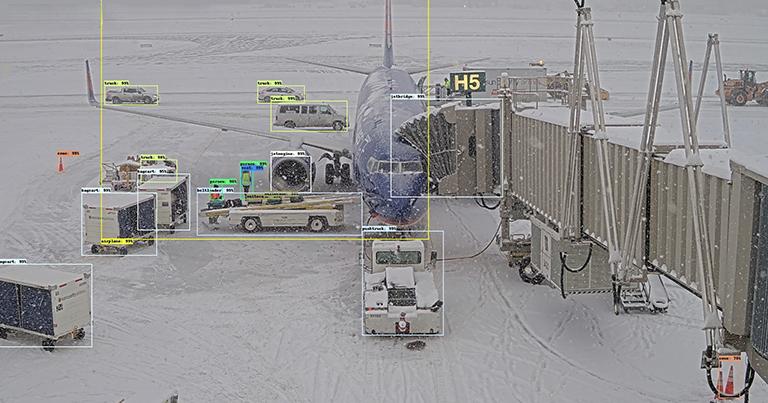
Synaptic Aviation – a Gold Sponsor of FTE Global 2025 – uses artificial intelligence (AI) and computer vision to improve airport ground operations. The company’s platform seamlessly integrates with existing airport cameras and infrastructure to provide real-time insights into aircraft turnaround, gate utilisation, and operational safety. By automating manual tasks and offering predictive data, Synaptic helps airlines and airports increase efficiency, reduce delays, and lower fuel consumption, supporting a smarter, safer air transport ecosystem.

Synaptic has maintained a flexible architecture, adapting to each customer’s unique network and privacy requirements, as Justin Kester, VP Global Sales, Synaptic Aviation, will explain in a session titled ‘Pilot stories: What are hard lessons learned, and secrets, to a successful innovation journey?’ at FTE Global (Long Beach, California, 9 to 11 September 2025). “We develop custom software modules, such as audio features, to meet specific needs,” Kester shares. “Our platform can be deployed on-premise, in the cloud, or in a hybrid configuration. For cloud deployments, we support Azure, AWS, Google Cloud, and private cloud environments. We operate within customers’ existing ecosystems and integrate with their information systems. For example, we even push alerts directly to Microsoft Teams for one customer. The technology is proven, delivers an extremely attractive ROI, and we believe it will be adopted globally by airports and airlines within the next 10 years, whether through Synaptic or a competitor. When evaluating providers, it’s critical to consider product quality – particularly the quality of information delivered, deployment capabilities, and vendor flexibility. On all three fronts, we’re confident you’ll be hearing much more from Synaptic very soon.”
Synaptic Aviation values FTE events for their unique ability to bring together industry leaders, innovators, and decision-makers in one collaborative environment. “These events foster knowledge sharing, partnership opportunities, and insight into emerging trends that shape the future of aviation,” Kester adds. “At this year’s FTE Global, Synaptic is particularly excited to showcase its latest AI-driven solutions, engage with forward-thinking aviation professionals, and explore new collaborations that drive smarter, safer, and more efficient airport operations.”
View the full FTE Global 2025 schedule at a glance >> Register for FTE Global 2025 >>You may also be interested in
12 technology and CX trends that can enhance airline and airport operations in 2025
